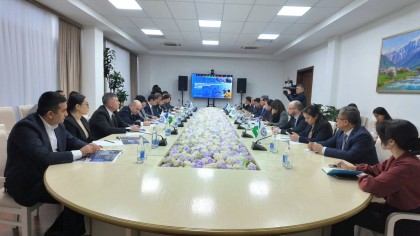Demand for power will steadily grow by 7.5% annually until 2030, the Energy Minister Jurabek Mirzamakhmudov said at the Russian Energy Week on September 26.
"We project that demand will grow by about 7.5% per year until 2030. Now we have 7-8% annually," he said.
According to him, in such conditions, the introduction of new generation sources is required. In this regard, Uzbekistan has adopted a program according to which it is planned to build solar and wind power plants with a capacity of 20 GW by 2030.
"We plan to increase the share of renewable energy to 40%. Currently, the share of renewable energy sources in total production has already reached 10%, by the end of the year we will increase it to 15%. About 2.5-3.5 GW of renewable energy sources will be introduced annually," he noted.
The Minister pointed out that the implementation of this program is aligned with the development of other energy sources: hydroelectric power plants, modernization and construction of thermal power plants.
"If now, by the end of this year, our thermal power plant capacity will stand at over 14 GW, then by the end of 2030 we will increase their capacity to 18.5 GW. We are balanced taking into account the development of all energy sources. There are more than 300 days of sun, there is a good wind flow - it would be a sin not to use it," Mirzamakhmudov said.
While, Uzbekistan is developing electricity storage systems based on lithium-ion batteries.
"This year we are introducing the first 300 MW storage system. By 2030, it is planned to [increase the capacity] of storage systems to 4.2 GW. Along with this, the implementation of a project for the construction of pumped-storage power plants is envisaged, that is, to use the hydro potential. I would also like to note that 100% of renewable energy projects are implemented through foreign direct investment,” the Minister of Energy said.
As reported earlier, the Statistics Agency began publishing statistics on power generation by large and small enterprises. The total production volume for January-August increased by 4.1% — from 52.3 billion to 54.43 billion kWh.
Electricity production by large energy supply enterprises, most of which operate on gas (as well as coal and hydroelectric power plants), decreased to 5.84 billion kWh in August, which is 625.4 million kWh (-9.7%) less than in August last year (6.5 billion). The losses are offset by electricity generation at solar and wind power plants (share in generation is 10.6%) — 5.8 billion kWh.













